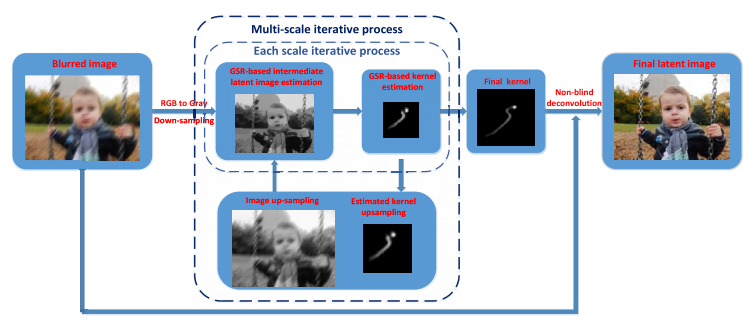- ALL COMPUTER, ELECTRONICS AND MECHANICAL COURSES AVAILABLE…. PROJECT GUIDANCE SINCE 2004. FOR FURTHER DETAILS CALL 9443117328


Projects > ELECTRONICS > 2020 > IEEE > DIGITAL IMAGE PROCESSING
We propose a blind image deblurring model based on the group sparse representation (GSR) prior. The motivation for this work is that adjacent similar patches of images and blur kernels favor clear images and ground-truth kernels over blurred images and poor kernels. Therefore, we impose GSR constraints on similar patches based on images and kernels to ensure the sparsity of the intermediate latent images and kernels. In addition, to effectively preserve the main edges in the image, we impose an L0-regularized gradient prior on image restoration. Moreover, a flexible non-convex weighted L p -norm minimization is applied to the GSR and an adaptive dictionary is used for each similar group. To optimize our model, an effective optimization algorithm based on a generalized soft-thresholding algorithm and half-quadratic splitting strategy is developed. Several analyses verify the validity of the GSR prior. Experiments show that our method achieves satisfactory deblurring effects in several specific domains and is robust in both deblurring and denoising tasks. The results of qualitative and quantitative experiments indicate that our algorithm performs favorably with respect to state-of-the-art algorithms
Convolutional neural networks (CNNs)
We propose a blind deblurring model that employs GSR as the regularization prior of the image and blur kernel, and combines the L0-regularized gradient prior to deblurring. To effectively implement the GSR, a flexible non-convex weighted Lp -norm minimization is adopted. In addition, an adaptive dictionary is applied to effectively reduce computational complexity. We develop an effective optimization algorithm for blur kernel estimation based on the generalized soft-thresholding (GST) algorithm and the half-quadratic splitting (HQS) method. We experimentally analyze and confirm the validity of the GSR prior, which guarantees the sparsity of the intermediate latent image and kernel.
BLOCK DIAGRAM
